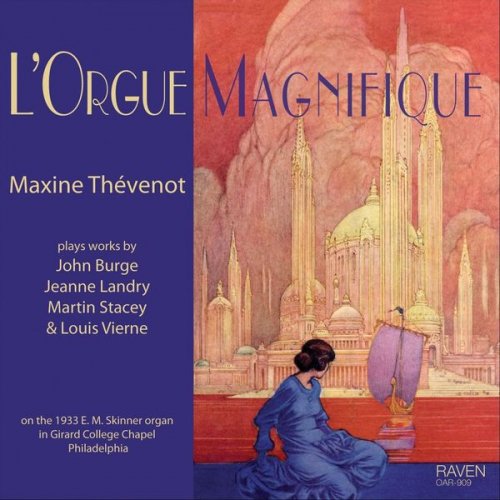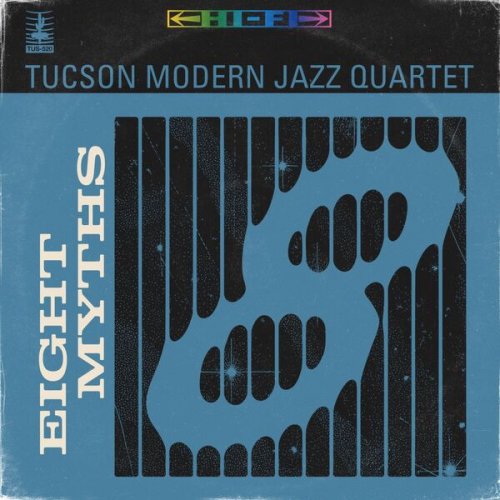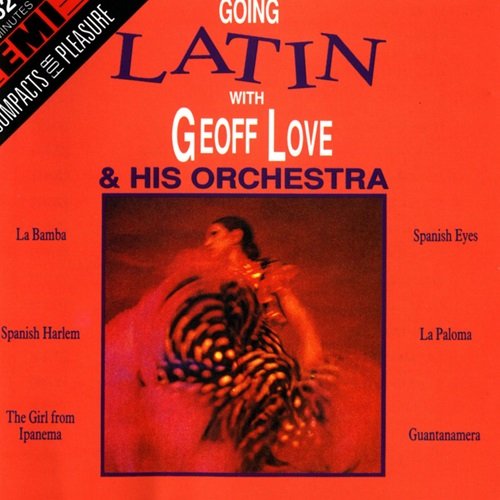Maxine Thévenot - L'orgue magnifique: 1933 E. M. Skinner Organ, Girard College, Philadelphia (2009)

Artist: Maxine Thévenot
Title: L'orgue magnifique: 1933 E. M. Skinner Organ, Girard College, Philadelphia
Year Of Release: 2009
Label: Raven
Genre: Classical
Quality: FLAC (tracks)
Total Time: 1:06:10
Total Size: 175 MB
WebSite: Album Preview
Tracklist:Title: L'orgue magnifique: 1933 E. M. Skinner Organ, Girard College, Philadelphia
Year Of Release: 2009
Label: Raven
Genre: Classical
Quality: FLAC (tracks)
Total Time: 1:06:10
Total Size: 175 MB
WebSite: Album Preview
1. Maxine Thévenot – Totentanz, hommage à Petr Eben (06:31)
2. Maxine Thévenot – Hesychia (04:41)
3. Maxine Thévenot – Dance (07:39)
4. Maxine Thévenot – Pièces de fantaisie, Op. 54: V. Sur le Rhin (08:21)
5. Maxine Thévenot – Triptyque, Op. 58: III. Stèle pour un enfant dèfunt (05:34)
6. Maxine Thévenot – Trois improvsations: II. Méditation (04:05)
7. Maxine Thévenot – Organ Symphony No. 3 in F-Sharp Minor, Op. 28: I. Allegro maestoso (06:16)
8. Maxine Thévenot – Organ Symphony No. 3 in F-Sharp Minor, Op. 28: II. Cantilène (05:05)
9. Maxine Thévenot – Organ Symphony No. 3 in F-Sharp Minor, Op. 28: III. Intermezzo (03:54)
10. Maxine Thévenot – Organ Symphony No. 3 in F-sharp Minor, Op. 28: IV. Adagio (07:02)
11. Maxine Thévenot – Organ Symphony No. 3 in F-Sharp Minor, Op. 28: V. Final (06:57)
Craig Smith reviews in The Santa Fe New Mexican:
"American pipe-organ builder E. M. Skinner (1866-1960) crafted instruments ideal for the symphonic-organ repertoire of his day, but his legacy was distorted when many were cruelly 'improved' during the 20th century Baroque revival. This disc highlights one of the few to escape artistic fire and sword: the noble instrument in Philadelphia's immense Girard College Chapel. It remains a veritable orchestra of one for those able to master it. Fortunately, Thévenot — Associate Organist-Choir Director at Albuquerque's Cathedral of St. John — is one of the elect. As earlier Raven recordings have shown, her technique is formidable and her musical instincts good, and she gracefully plays both large-scaled and intimate repertoire here. She projects Louis Vierne's brooding, thickly chromatic Symphony No 3 in F-sharp minor, boring in the wrong hands, with unusual clarity, while Sur le Rhin from Pièces de Fantaisie exudes sun-shot nobility through its wall of dark, massive sound. The introspective Méditation and touching Stèle pour un enfant défunt give Thévenot the chance to reveal and revel in the instrument's quieter, rainbow-hued palette. Martin Stacey's 2007 Totentanz (Hommage à Petr Eben), dedicated to Thévenot, proves to be a cacophonic yet persuasive dance of devilish delight, stunningly played. Raven's technical staff keep the chapel's ponderous acoustic on a judicious rein; but even so, this one will put your speakers to the test."
Maxine Thévenot plays Louis Vierne’s entire third symphony and three more Vierne works on the great masterpiece built in the acoustical splendor of Girard College Chapel, Philadelphia, in 1933 by E. M. Skinner, whose organs Vierne greatly admired. The program also includes three first recordings of recently composed works by three Canadian and British composers that further reveal the Girard Skinner as “L’Orgue Magnifique.”
The famous Skinner organ at Girard College Chapel represents the last great organ in a superb acoustical space built directly under the supervision of Ernest M. Skinner to remain intact, a monument to Skinner’s late tonal evolution under the challenge of by-then rival G. Donald Harrison. For this CD, recording engineer Ed Kelly, aided by Mark Willey, recreated and expanded upon the technique Kelly used to create Raven’s earlier, landmark recording on the Girard College organ of The Planets by Gustav Holst as transcribed and played by Peter Sykes. The CD booklet includes an explanation by Jonathan Ambrosino of the organ’s and building’s creation, and an excellent essay on the music by David Gammie.
An admirer of Skinner organs, Vierne wrote to Ernest Skinner in March, 1928, following an American concert tour, “Not a day passes that I don’t dream about your magnificent instruments that I played over there; their marvelous touch, their fine tone, their perfect and sensitive action haunt me… I also very often recall the visit to your factory in Boston; what I saw there sends me into rapture…”
Maxine Thévenot is associate organist-choral director of St. John’s Episcopal Cathedral, Albuquerque, and director of the women’s choir at the University of New Mexico where she is a member of the faculty. She appears on several earlier recordings, including the solo organ CD “Without Boundaries,” released in 2006.
A champion of new organ music of high quality, Thévenot also plays on this new CD, previously unrecorded works by fellow Canadians Jeanne Landry (b. 1922) and John Burge (b. 1961), and opens the CD with the energetic and virtuosic Totentanz, Hommage à Petr Eben, by Englishman Martin Stacey (b. 1975). Landry’s peaceful Hesychia follows, then Burge’s rhythmically compelling and playful Dance for organ derives from his choral work entitled Thank you God (1992).
"American pipe-organ builder E. M. Skinner (1866-1960) crafted instruments ideal for the symphonic-organ repertoire of his day, but his legacy was distorted when many were cruelly 'improved' during the 20th century Baroque revival. This disc highlights one of the few to escape artistic fire and sword: the noble instrument in Philadelphia's immense Girard College Chapel. It remains a veritable orchestra of one for those able to master it. Fortunately, Thévenot — Associate Organist-Choir Director at Albuquerque's Cathedral of St. John — is one of the elect. As earlier Raven recordings have shown, her technique is formidable and her musical instincts good, and she gracefully plays both large-scaled and intimate repertoire here. She projects Louis Vierne's brooding, thickly chromatic Symphony No 3 in F-sharp minor, boring in the wrong hands, with unusual clarity, while Sur le Rhin from Pièces de Fantaisie exudes sun-shot nobility through its wall of dark, massive sound. The introspective Méditation and touching Stèle pour un enfant défunt give Thévenot the chance to reveal and revel in the instrument's quieter, rainbow-hued palette. Martin Stacey's 2007 Totentanz (Hommage à Petr Eben), dedicated to Thévenot, proves to be a cacophonic yet persuasive dance of devilish delight, stunningly played. Raven's technical staff keep the chapel's ponderous acoustic on a judicious rein; but even so, this one will put your speakers to the test."
Maxine Thévenot plays Louis Vierne’s entire third symphony and three more Vierne works on the great masterpiece built in the acoustical splendor of Girard College Chapel, Philadelphia, in 1933 by E. M. Skinner, whose organs Vierne greatly admired. The program also includes three first recordings of recently composed works by three Canadian and British composers that further reveal the Girard Skinner as “L’Orgue Magnifique.”
The famous Skinner organ at Girard College Chapel represents the last great organ in a superb acoustical space built directly under the supervision of Ernest M. Skinner to remain intact, a monument to Skinner’s late tonal evolution under the challenge of by-then rival G. Donald Harrison. For this CD, recording engineer Ed Kelly, aided by Mark Willey, recreated and expanded upon the technique Kelly used to create Raven’s earlier, landmark recording on the Girard College organ of The Planets by Gustav Holst as transcribed and played by Peter Sykes. The CD booklet includes an explanation by Jonathan Ambrosino of the organ’s and building’s creation, and an excellent essay on the music by David Gammie.
An admirer of Skinner organs, Vierne wrote to Ernest Skinner in March, 1928, following an American concert tour, “Not a day passes that I don’t dream about your magnificent instruments that I played over there; their marvelous touch, their fine tone, their perfect and sensitive action haunt me… I also very often recall the visit to your factory in Boston; what I saw there sends me into rapture…”
Maxine Thévenot is associate organist-choral director of St. John’s Episcopal Cathedral, Albuquerque, and director of the women’s choir at the University of New Mexico where she is a member of the faculty. She appears on several earlier recordings, including the solo organ CD “Without Boundaries,” released in 2006.
A champion of new organ music of high quality, Thévenot also plays on this new CD, previously unrecorded works by fellow Canadians Jeanne Landry (b. 1922) and John Burge (b. 1961), and opens the CD with the energetic and virtuosic Totentanz, Hommage à Petr Eben, by Englishman Martin Stacey (b. 1975). Landry’s peaceful Hesychia follows, then Burge’s rhythmically compelling and playful Dance for organ derives from his choral work entitled Thank you God (1992).




![Travis Jenkins Piano Trio - Jazz in Meanjin 020 (Live at JMI) (2025) [Hi-Res] Travis Jenkins Piano Trio - Jazz in Meanjin 020 (Live at JMI) (2025) [Hi-Res]](https://www.dibpic.com/uploads/posts/2025-12/1765862611_a2068783921_10.jpg)


![Amira Kheir - Black Diamonds (2025) [Hi-Res] Amira Kheir - Black Diamonds (2025) [Hi-Res]](https://www.dibpic.com/uploads/posts/2025-12/1765640459_tf7wrmc9lqmqc_600.jpg)
